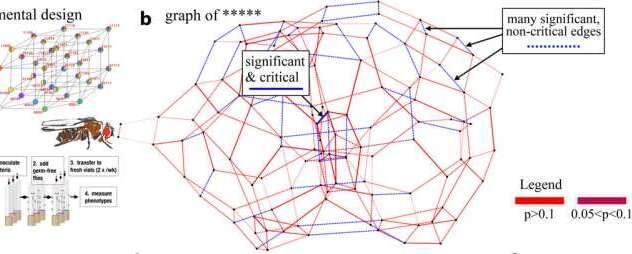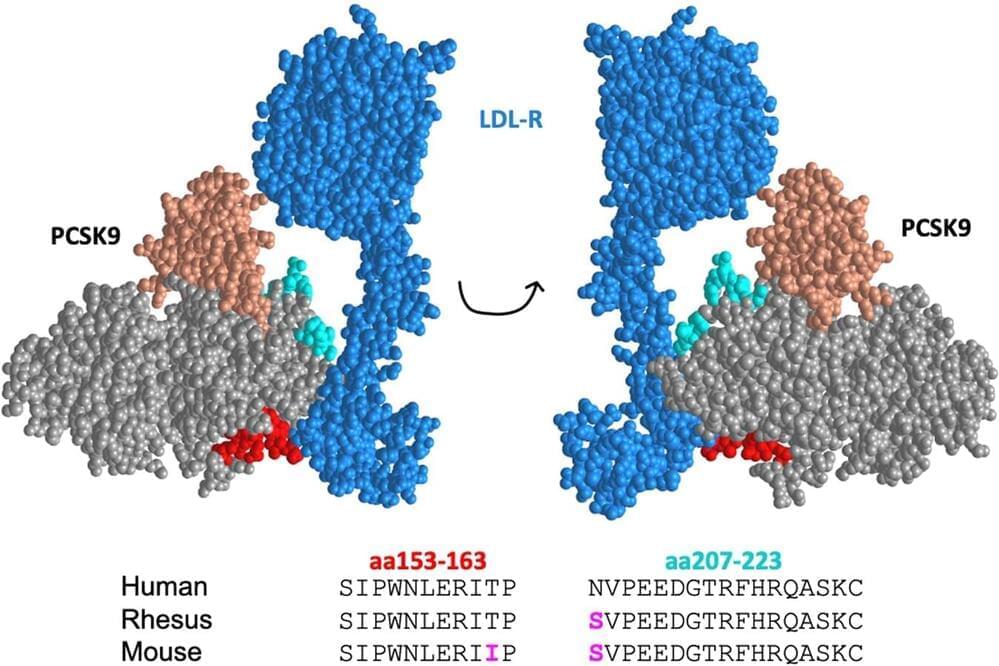Horizons _ SCIENCE, TECHNOLOGY + HEALTH



Abstract Here we represent human lives in a way that shares structural similarity to language, and we exploit this similarity to adapt natural language processing techniques to examine the evolution and predictability of human lives based on detailed event sequences.
Using registry data from Denmark, Lehmann et al. create individual-level trajectories of events related to health, education, occupation, income and address, and also apply transformer models to build rich embeddings of life-events and to predict outcomes ranging from time of death to personality.

A team of researchers around Berlin mathematics professor Michael Joswig is presenting a novel concept for the mathematical modeling of genetic interactions in biological systems. Collaborating with biologists from ETH Zurich and Carnegy Science (U.S.), the team has successfully identified master regulators within the context of an entire genetic network.
The research results provide a coherent theoretical framework for analyzing biological networks and have been published in the Proceedings of the National Academy of Sciences.
It is a longstanding goal of biologists to determine the key genes and species that have a decisive impact on evolution, ecology, and health. Researchers have now succeeded in identifying certain genes as master regulators in biological networks. These key regulators exert greater control within the system and steer essential cellular processes. Previous studies have mainly focused on pairwise interactions within the system, which can be strongly affected by genetic background or biological context.


A hole in your throat is nothing to sneeze at, as shown by a case report recently published in BMJ Case Reports. And the case report showed the dangers of pinching your nose and closing your mouth in an attempt to stifle a sneeze. A man in his 30s tried doing this and was left with a hole is his trachea, which can be a hole lot of trouble.
This man who had a history of allergies was wearing a seat belt while driving his car when he felt the need to sneeze and in a pinch tried to keep the sneeze from exiting from either his nostrils or his mouth. This led to quite a pressure-filled situation. Normally, sneezing can generate a pressure of one to two kilopascals in the upper airways which, in turn, can blast air and accompanying gunk out through your nose and mouth. But guess what happens when you pinch your nose shut and keep your mouth closed at the same time? Rather than rushing out of these holes, the air has no place to go. That can build up pressure your the upper airways that is up to 20 times higher than what a released sneeze would generate.
After this sneezus interruptus, the man began experiencing severe neck pain and eventually ended up in the emergency department of Ninewells Hospital in Dundee, UK. The four authors of the case report (Rasads Misirovs, Gary Hoey, Calum Carruthers and Samit Majumdar) work at this hospital. There doctors found the man’s neck to be swollen on both sides. An X-ray of his neck revealed evidence of air where it wasn’t supposed to be, and a CT of the neck and chest with contrast showed a 2 mm by 2 mm by 5 mm in his trachea, otherwise known as his windpipe.
In this episode, my guest is Dr. Robert Lustig, M.D., neuroendocrinologist, professor of pediatrics at the University of California, San Francisco (UCSF), and a bestselling author on nutrition and metabolic health. We address the “calories in-calories out” (CICO) model of metabolism and weight regulation and how specific macronutrients (protein, fat, carbohydrates), fiber and sugar can modify the CICO equation. We cover how different types of sugars, specifically fructose, sugars found in liquid form, taste intensity, and other factors impact insulin levels, liver, kidney, and metabolic health. We also explore how fructose in non-fruit sources can be addictive (acting similarly to drugs of abuse) and how sugar alters brain circuits related to food cravings and satisfaction. We discuss the role of sugar in childhood and adult obesity, gut health and disease and mental health. We also discuss how the food industry uses refined sugars to create pseudo foods and what these do to the brain and body. This episode is replete with actionable information about sugar and metabolism, weight control, brain health and body composition. It ought to be of interest to anyone seeking to understand how specific food choices impact the immediate and long-term health of the brain and body. For the show notes, including referenced articles and additional resources, please visit https://www.hubermanlab.com/episode/dr-robert-lustig-how-sug…our-health Thank you to our sponsors AG1: https://drinkag1.com/huberman Eight Sleep: https://eightsleep.com/huberman Levels: https://levels.link/huberman AeroPress: https://aeropress.com/huberman LMNT: https://drinklmnt.com/huberman Momentous: https://livemomentous.com/huberman Huberman Lab Social & Website Instagram: https://www.instagram.com/hubermanlab Twitter: https://twitter.com/hubermanlab Facebook: https://www.facebook.com/hubermanlab TikTok: https://www.tiktok.com/@hubermanlab LinkedIn: https://www.linkedin.com/in/andrew-huberman Website: https://www.hubermanlab.com Newsletter: https://www.hubermanlab.com/newsletter Dr. Robert Lustig Website: https://robertlustig.com Books: https://robertlustig.com/books Publications: https://robertlustig.com/publications Blog: https://robertlustig.com/blog UCSF academic profile: https://profiles.ucsf.edu/robert.lustig Metabolical (book): https://amzn.to/48mNhOE SugarScience: http://sugarscience.ucsf.edu X: https://twitter.com/RobertLustigMD Facebook: https://www.facebook.com/DrRobertLustig LinkedIn: https://www.linkedin.com/in/robert-lustig-8904245 Instagram: https://www.instagram.com/robertlustigmd Threads: https://www.threads.net/@robertlustigmd Timestamps 00:00:00 Dr. Robert Lustig 00:02:02 Sponsors: Eight Sleep, Levels & AeroPress 00:06:41 Calories, Fiber 00:12:15 Calories, Protein & Fat, Trans Fats 00:18:23 Carbohydrate Calories, Glucose vs. Fructose, Fruit, Processed Foods 00:26:43 Fructose, Mitochondria & Metabolic Health 00:31:54 Trans Fats; Food Industry & Language 00:35:33 Sponsor: AG1 00:37:04 Glucose, Insulin, Muscle 00:42:31 Insulin & Cell Growth vs. Burn; Oxygen & Cell Growth, Cancer 00:51:14 Glucose vs. Fructose, Uric Acid; “Leaky Gut” & Inflammation 01:00:51 Supporting the Gut Microbiome, Fasting 01:04:13 Highly Processed Foods, Sugars; “Price Elasticity” & Food Industry 01:10:28 Sponsor: LMNT 01:11:51 Processed Foods & Added Sugars 01:14:19 Sugars, High-Fructose Corn Syrup 01:18:16 Food Industry & Added Sugar, Personal Responsibility, Public Health 01:30:04 Obesity, Diabetes, “Hidden” Sugars 01:34:57 Diet, Insulin & Sugars 01:38:20 Tools: NOVA Food Classification; Perfact Recommendations 01:43:46 Meat & Metabolic Health, Eggs, Fish 01:46:44 Sources of Omega-3s; Vitamin C & Vitamin D 01:52:37 Tool: Reduce Inflammation; Sugars, Cortisol & Stress 01:59:12 Food Industry, Big Pharma & Government; Statins 02:06:55 Public Health Shifts, Rebellion, Sugar Tax, Hidden Sugars 02:12:58 Real Food Movement, Public School Lunches & Processed Foods 02:18:25 3 Fat Types & Metabolic Health; Sugar, Alcohol & Stress 02:26:40 Artificial & Non-Caloric Sweeteners, Insulin & Weight Gain 02:34:32 Re-Engineering Ultra-Processed Food 02:38:45 Sugar & Addiction, Caffeine 02:45:18 GLP-1, Semaglutide (Ozempic, Wegovy, Tirzepatide), Risks; Big Pharma 02:57:39 Obesity & Sugar Addiction; Brain Re-Mapping, Insulin & Leptin Resistance 03:03:31 Fructose & Addiction, Personal Responsibility & Tobacco 03:07:27 Food Choices: Fruit, Rice, Tomato Sauce, Bread, Meats, Fermented Foods 03:12:54 Intermittent Fasting, Diet Soda, Food Combinations, Fiber, Food Labels 03:19:14 Improving Health, Advocacy, School Lunches, Hidden Sugars 03:26:55 Zero-Cost Support, Spotify & Apple Reviews, YouTube Feedback, Sponsors, Momentous, Social Media, Neural Network Newsletter #HubermanLab #Science #Nutrition Title Card Photo Credit: Mike Blabac — https://www.blabacphoto.com Disclaimer: https://hubermanlab.com/disclaimer

Nearly two in five U.S. adults have high cholesterol, according to the Centers for Disease Control and Prevention (CDC). Untreated, high cholesterol can lead to heart disease and stroke, which are two of the top causes of death in the U.S. Worldwide; cardiovascular diseases claim nearly 18 million lives every year, according to the World Health Organization.
A new vaccine developed by researchers at The University of New Mexico School of Medicine could be a game-changer, providing an inexpensive method to lower “bad” LDL cholesterol, which creates dangerous plaques that can block blood vessels.
In a recent study published in npj Vaccines, a team led by Bryce Chackerian, Ph.D., Regents’ Professor in the Department of Molecular Genetics & Microbiology, reported the vaccines lowered LDL cholesterol almost as effectively as an expensive class of drugs known as PCSK9 inhibitors.
Welcome for another episode of Health Theory! This episode promises to deliver a riveting conversation with the master of fitness, Andy Galpin. Andy is not just your average exercise physiologist, professor, and researcher. He’s a true powerhouse with a trademark ability to seamlessly bridge the gap between academic knowledge and real-world application.

Europe’s health regulator followed the US and UK in backing the first gene-editing therapy to use Crispr technology, a Vertex Pharmaceuticals Inc. and Crispr Therapeutics AG treatment for sickle cell disease.
The European Medicines Agency’s expert panel recommended on Friday authorizing the Vertex and Crispr drug, Casgevy, for people with severe sickle cell disease and another serious hereditary blood disorder, beta-thalassemia, which is traditionally treated with repeated transfusions. Vertex said before the ruling that it had yet to establish a European list price for the one-time therapy, which costs $2.2 million in the US.
The treatment makes precisely targeted changes in patients’ DNA, a months-long process that requires removing bone marrow and a stem cell transplant. In Europe, Vertex said its initial focus will be on countries with the highest numbers of patients, including France, Italy, the UK and Germany.

Bad things can happen when you hallucinate. If you are human, you can end up doing things like putting your underwear in the oven. If you happen to be a chatbot or some other type of artificial intelligence (AI) tool, you can spew out false and misleading information, which—depending on the info—could affect many, many people in a bad-for-your-health-and-well-being type of way. And this latter type of hallucinating has become increasingly common in 2023 with the continuing proliferation of AI. That’s why Dictionary.com has an AI-specific definition of “hallucinate” and has named the word as its 2023 Word of the Year.
Dictionary.com noticed a 46% jump in dictionary lookups for the word “hallucinate” from 2022 to 2023 with a comparable increase in searches for “hallucination” as well. Meanwhile, there was a 62% jump in searches for AI-related words like “chatbot”, “GPT”, “generative AI”, and “LLM.” So the increases in searches for “hallucinate” is likely due more to the following AI-specific definition of the word from Dictionary.com rather than the traditional human definition:
hallucinate [ h uh-loo-s uh-neyt ]-verb-(of artificial i ntelligence) to produce false information contrary to the intent of the user and present it as if true and factual. Example: When chatbots hallucinate, the result is often not just inaccurate but completely fabricated.
Here’s a non-AI-generated new flash: AI can lie, just like humans. Not all AI, of course. But AI tools can be programmed to serve like little political animals or snake oil salespeople, generating false information while making it seem like it’s all about facts. The difference from humans is that AI can churn out this misinformation and disinformation at even greater speeds. For example, a study published in JAMA Internal Medicine last month showed how OpenAI’s GPT Playground could generate 102 different blog articles “that contained more than 17,000 words of disinformation related to vaccines and vaping” within just 65 minutes. Yes, just 65 minutes. That’s about how long it takes to watch the TV show 60 Minutes and then make a quick uncomplicated bathroom trip that doesn’t involve texting on the toilet. Moreover, the study demonstrated how “additional generative AI tools created an accompanying 20 realistic images in less than 2 minutes.